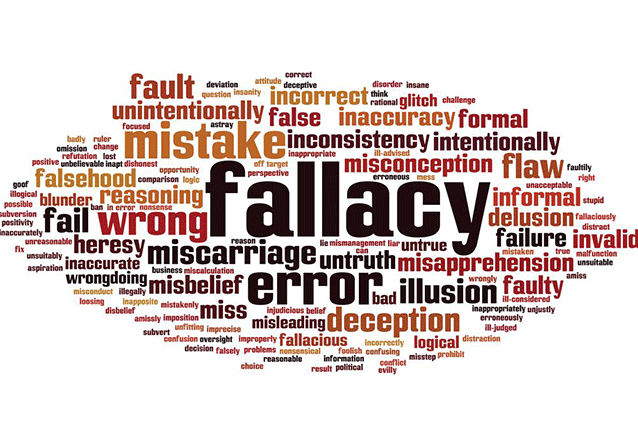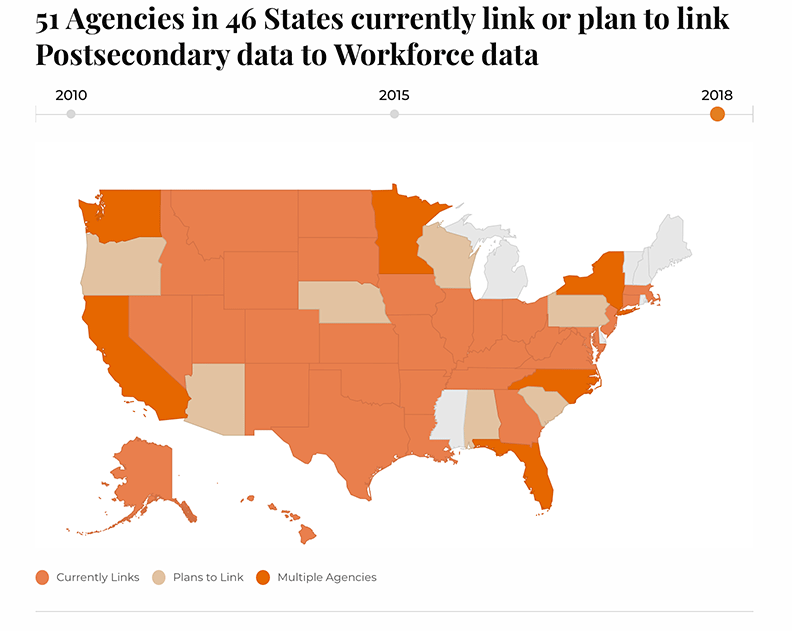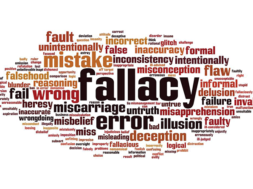
Placement Rate Misrepresentation – Background, Analysis and Prevention
Background
The increase in college costs has resulted in a national spotlight on outcomes in higher education. Legislators, regulators, students and their families are more focused on the value proposition accompanying the cost and potential student debt load and are demanding access to information on outcomes. The U.S. Department of Education has also expanded the information available on the College Scorecard in recent years and added the ability to compare multiple schools against one another (https://collegescorecard.ed.gov/data/changelog/). Colleges must ensure that the backup data behind the rates they are required to compile and release are accurate and verifiable.
The program integrity regulations and corresponding sections of the Student Aid Handbook have also been changed to further define intentional and un-intentional misrepresentation of data and information.
What is misrepresentation?
“Misrepresentation is defined as a false, erroneous, or misleading statement made directly or indirectly to a student, prospective student, member of the public, an accrediting agency, a state agency, or the Department.”
“A misleading statement includes any statement that has the likelihood or tendency to deceive or confuse. A statement is any communication made in writing, visually, orally, or through other means.”
“Substantial misrepresentations are prohibited in all forms, including those made in any advertising or promotional materials or in the marketing or sale of courses or programs of instruction offered by the institution.” (https://ifap.ed.gov/fsahandbook/attachments/1617FSAHbkActiveIndexMaster.pdf)
Regulations specifically describe the myriad of ways misrepresentation is classified as it relates to the employability of graduates at 34 CFR Sec. 668.74. Institutions must be clear and accurate with regard to job prospects, requirements to be employed in a field, any reported job market statistics, job market forecasting, support they offer to graduates, and any claims or disclosures of placement or employment rates be verifiable.
Many states, programmatic and national accrediting agencies require institutions to compile and disclose placement rates by program, and the measuring periods and definitions are frequently different (see Table). When institutions must track and report multiple metrics, the risk for error grows. In a recent report by The Institute for College Access and Success, the authors write, “Depending on its location and type, a particular postsecondary program may be required by one or more overseers to calculate no employment metrics at all, calculate a single metric, or calculate multiple metrics. This patchwork of incomparable data stems from the inconsistent approaches to whether and how to calculate employment metrics required by accreditors, state regulators, and the federal government.” (Page 7, “Of Metrics and Markets”)
| Job Placement Rate Reporting Across Regional Accrediting Agencies | ||||
| Accrediting Agency | Reporting Required? | Disclosure Required? | Benchmark and Sanctions | |
| Higher Learning Commission | No | No | Set by the institution if they choose to use it as a post-completion success metric | |
| Middle States Commission on Higher Education | No | No | Set by the institution if they choose to use it as a post-completion success metric | |
| New England Association of School and Colleges | No | No | Set by the institution if they choose to use it as a post-completion success metric | |
| Southern Association of Colleges and Schools | No | No | Set by the institution if they choose to use it as a post-completion success metric | |
| Western Association of Schools and Colleges, Community and Junior Colleges | Yes (for career and technical programs) | No | Set by the institution if they choose to use it as a post-completion success metric | |
| Western Association of Schools and Colleges, Senior Colleges and Universities | No | No | Not Applicable | |
| Northwest Commission on College and Universities | No | No | Not applicable | |
| Job Placement Rate Reporting Across National Accrediting Agencies | ||||
| Accrediting Agency | Reporting Required? | Disclosure Required? | Benchmark and Sanctions | |
| Accrediting Commission of Career Schools and Colleges (ACCSC) | Yes | Yes | 70 percent (or heightened monitoring, reporting or programmatic sanctions may be applied) | |
| Accrediting Council for Continuing Education and Training (ACCET) | Yes (vocational programs) | No | 70 percent (or heightened monitoring, reporting or programmatic sanctions may be applied); 56 percent (or programmatic probation) |
|
| Accrediting Council for Independent Colleges and Schools (ACICS) | Yes | Yes | 70 percent (or heightened reporting); 60 percent (or compliance warning); 50 percent (adverse action) | |
| Council on Occupational Education (COE) | Yes | No | 70 percent (or compliance warning) | |
| National Accrediting Commission of Career Arts and Sciences (NACCAS) | Yes | No | 60 percent(or heightened monitoring or loss of accreditation) | |
| Accrediting Bureau of Health Education Sciences | Yes | Yes | 70 percent (or institution must submit an action plan) | |
| Distance Education Accrediting Commission | No | No | Not applicable | |
Source: “Of Metrics and Markets: Measuring Post-College Employment Success,” The Institute for College Access and Success, December 2018
In addition, 46 states currently link or plan to link information regarding postsecondary education to workforce data, as reported in a recent study by the State Higher Education Executive Officers (SHEEHO), see map below.
 Analysis
Analysis
The risk for misrepresentation is compounded for institutions with multiple accrediting agencies or with locations in multiple states. Students and prospective students may report that they were misled or may be confused by the presence of multiple placement rates, even though the institution is merely complying with its regulatory requirements. In the National Consumer Law Center’s 2014 report of government investigations and lawsuits concerning proprietary institutions, the overwhelming majority involved misrepresentation of job placement rates or outcomes. (https://www.nclc.org/images/pdf/pr-reports/for-profit-gov-investigations.pdf) Further, from 2009 to 2017, 12 lawsuits against proprietary institutions for placement rate misrepresentation resulted in settlements ranging from a low of $375,000 to over $1 billion (Page 19, “Of Metrics and Markets”).
The penalties associated with misrepresentation may include any one or more of the following, depending on the severity, breadth and extent of the infraction:
- Limitation/suspension/termination;
- Heightened cash monitoring;
- Fines and possible criminal penalties;
- Repayment of prior aid awards/refunds/forgiveness;
- Additional reporting/oversight/growth restrictions;
- Loss of state license/certification/grant eligibility; and
- Bad press/media attention.
The demand for information on outcomes in higher education continues to grow. Many organizations and foundations (Brookings and Lumina) are promoting outcomes-based funding for higher education and an increase in the availability of employment or salary information tied to institutions, and more specifically, by program or major (“Moneyball for Higher Education”). However, the availability of data regarding employment and employment tied to educational attainment or program of study varies greatly from state to state and is very difficult to integrate for comparison purposes. The authors of “Moneyball for Higher Education” write, “While states are increasingly looking to employment metrics, particularly job placement rates, in making decisions about where to allocate both state and federal higher education resources, variation in the criteria that individual states use has led to data that cannot be compared across states (Page 15).”
Prevention
The September 2016 U.S. Department of Education Title IV Audit Guide for for-profit higher education institutions and third-party servicers performing functions for those institutions was expanded in many areas. Of importance in this dialogue is the inclusion of a new requirement for the auditor to test placement rates if an institution is required to calculate or chooses to advertise them (see language from the guide below).
The auditor must:
- Review the advertised/calculated job placement rates and, on a test basis, trace and verify the information to source documents;
- Determine how prospective students are provided with this required information prior to enrollment; and
- Review state licensing and accreditation requirements for any job in which the school has advertised placement rates and determine if the school is in compliance. (https://www2.ed.gov/about/offices/list/oig/nonfed/schoolservicerauditguide.pdf)
The inclusion of this review process will help institutions identify when there are abnormalities or inconsistencies with their supporting documentation and encourage ongoing internal reviews to prevent findings. However, institutions should not wait until their compliance audit to deploy a system of checks and balances with regard to the accuracy of reported or advertised placement rates or the documentation and procedures used to substantiate placements.
Please refer to the charts below for the most common “findings” or problems encountered when reviewing job placement detail for accuracy.
| Verification Outcome | Solution |
| Never worked here | Find correct placement and re-submit, removing the old placement from your system |
| Bad contact information | Obtain corrected contact information and re-attempt |
| Dissatisfied employer or graduate | Follow up with the graduate or employer to mend or build the relationship |
| Different job title | Probe regarding duties to validate if the position is in his/her field, or if it is a promotion or new position |
| Different start date | Update records |
| Invalid Placement | Solution |
| Bad data in the system | Review your policies for inputting data and ensure that reporting comes from the correct record |
| “Trusting” graduates’ self-reported placements | Review accreditation policies with regard to a verifiable placement record and establish a system to check self-reported data with employers or proof of work for self-employed |
| Failure to follow up after the placement should have begun | Follow-up with the graduate or employer after the first paycheck or financial remuneration, as it is not a placement without some form of compensation |
| Unwillingness to report on “cash” jobs | Build rapport with graduates and employers to explain the reason for verification |
We have compiled a “top ten” list of strategies to prevent placement rate misrepresentation that will help institutions have confidence in the accuracy of their placement rates and guard against placement rate misrepresentation. Please contact me for a free copy!
Resources
Bridgeland, John and Kvall, James, “Moneyball for Higher Education – How States Can Use Data and Evidence to Improve Student Outcomes,” Results for America, January 2018
Dalal, Neha, Stein, Beth and Thompson, Jessica, “Of Metrics and Markets: Measuring Post-College Employment Success,” The Institute for College Access and Success, December 2018
Hegji, Alexandra, “An Overview of Higher Education in the United States,” Congressional Research Service, March 2017
“Government Investigations and Lawsuits Involving For-Profit Schools (2004- May 2014), National Consumer Law Center, 2014
ELIZABETH KEIFER HERRON, a member of the executive management team of CARS, leads the independent third-party placement verification line of services. In addition, Elizabeth provides client services, community outreach, and is the chief compliance specialist for CARS’ family of companies. Serving on numerous higher education associations’ committees, she is a much sought-after presenter at numerous workshops and conferences. Her presence in Washington, D.C. enables her to access up-to-the-minute information on a variety of legislative and regulatory issues affecting the postsecondary industry. A founding member of the CARS’ family of companies, Elizabeth’s prior experience included chief lobbyist for the Career College Association (now CECU). She received her BA with honors in Political Science and Economics from Douglass College of Rutgers University, and resides in Washington, D.C. with her husband and two boys.
Contact Information: Elizabeth Keifer Herron // Vice President – Solutions & Sales // Collegiate Admission and Retention Solutions (CARS) // 202-558-2337 // ekherron@collegiatersvp.com // www.collegiatersvp.com // https://www.linkedin.com/in/elizabeth-herron-446595/











